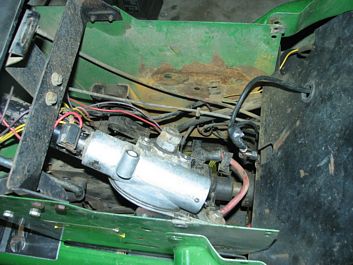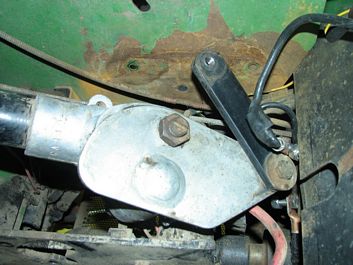Everywhere
I
look,
parts
are
covered
in
dirt.
I wish I would have borrowed a
power washer and cleaned it before moving it into the basement.
|
The
steering
rock
shaft
is
removed
and
checked
for play. Both
bushings are pretty sloppy, but it won't be used with the power
steering.
|



